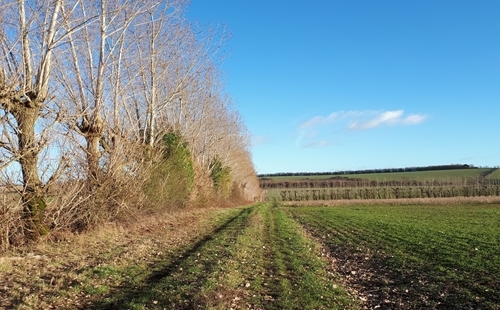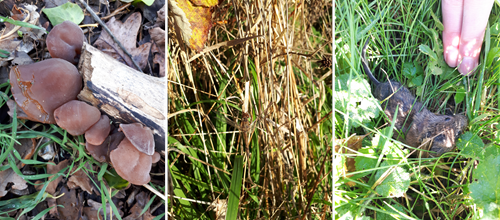Written by Jenny Coomes, LGU Project Scientist

In April 2023, the Lowland Gamebird research group finished a full year of walking 3km transect routes across a number of sites every three weeks, looking for fox scats and recording wildlife sightings. We are hoping to answer the question “Do sites that release gamebirds have more fox activity than non-release sites?”. You can read more about the aims of our project and our spring finds in my previous two blogs here and here.
Since my last blog back in June 2022, we added two new release sites to our fieldwork programme, taking our total to ten release and eight non-release sites. Due to the prevalence of avian influenza, there was some concern last summer that a number of release sites may not be able to source pheasants or red-legged partridges - so we found two new release sites to add to the study. In the end, all of the sites managed to get their birds so we gained two and didn’t lose any. This increased sample size will improve the robustness of our study conclusions.
We continued walking our transects throughout the very hot summer of 2022 and then into the winter. Our biggest surprise was how much the number of scats that we found declined between November and February. We found hardly any scats during this time and were wondering why this might be.
We know that foxes are territorial in the spring, and the reason that our transect routes follow linear features such as woodland edges and hedgerows is because foxes walk through their territories along these linear features. They communicate with other foxes on nearby territories by leaving scats in prominent places in the landscape e.g., an obvious piece of flint on a field edge or the intersection of many animal tracks on a grass margin.
A fox needs to make a scat as obvious as possible to be sure that its message is clear: “stay out of my territory”. In contrast to this, in the winter, most foxes don’t have the same motivation to defend a territory, so don’t need to communicate with each other and therefore don’t need to leave their scats in prominent places. Of course, foxes still produce scats in winter, but they are not leaving them on our transect route.
Nature finds during winter transect survey
At the time of writing, in late April, the number of scats we are finding is just starting to creep up again so the foxes are out and about again defending their territories. It is possible foxes are leaving our transect areas in the winter to roam the countryside and are then returning again in spring, but I don’t think this can be the case for all our 18 study sites. I think it is more likely they were scatting less prominently or simply staying cosy in their burrows.
Despite not finding many scats, there were still plenty of nature finds to keep us entertained throughout the winter. In November we bumped into a bank vole which stayed put long enough for us to have a good look, an unusual occurrence as we are normally only aware of them from a rustle in the grass.
We saw a number of interesting fungi species like this jelly ear (Auricularia auricula-jadae) and I was quite surprised to see a dragonfly in December at one site! We saw lots of winter migrants including redwing (Turdus iliarcus) and fieldfare (Turdus pilaris) that come over to the UK from Iceland and Scandinavia.
One of our field sites had hundreds of these winter visitors, so we became very familiar with the whistling and rattling contact calls of each species. Corn buntings and linnets were also common finds, and we were very lucky on one occasion to come across a roosting barn owl in a disused barn!

As of now, we’ve walked 936km (581 miles) and collected 1120 scats in total. We still plan to perform a diet analysis technique called DNA metabarcoding to identify the prey species present in the scats, and the first batch of samples will be sent off very soon to the University of Exeter who will undertake this work.
In the last month we have completed a second year of spring gamebird vehicle counts on all the sites to compare to our estimates from last year. The survey involves driving over as much of the estate as we can, on the area near our walking transect route, and counting the number of gamebirds we see. Two years’ worth of data is better than one!
I am looking forward to everything waking up for spring and we’ll keep walking our transects until the end of September so will wait to see if this summer will bring any new nature finds.
BASC made a significant donation to the GWCT which enabled this research study to go ahead.